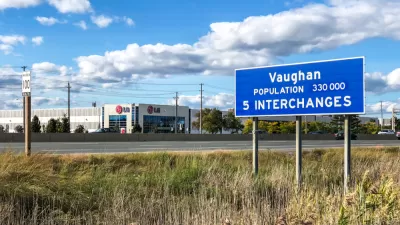In many exurban locations, planners and developers are often enticed by the idea of building urban environments, but without the necessary markets to support them, argues a real estate consultant.
Anthropologists coined the term “Cargo Cults” after World War II for remote island communities in the Pacific that became baffled after modern technology and Western goods disappeared with the troops. These communities would “build crude replicas of Western technology – runways made of palm fronds or radio headsets made of coconuts – because they believed that mimicking the technology would attract the planes full of supplies to which they had been accustomed.”
In real estate, “Cargo Cult Urbanism” occurs when developers and planners create comprehensive plans and zoning regulations with impractical densities and mixes of uses, without ensuring that there is sufficient market demand to support such development.
According to Jonathan Bartlett, Senior Manager at CohnReznick, the best way to avoid Cargo Cult Urbanism is to “thoroughly assess your market and understand what’s really driving real estate demand,” which can help “guide a community from a grand but infeasible vision toward a smaller scale project with enough juice to attract private sector investment and actually lead to real transformation.”
“The last thing we want is to be staring at empty streetscapes, like so many islanders waiting for planes that will never come.”
FULL STORY: Beware of cargo cult urbanism in real estate

Study: Maui’s Plan to Convert Vacation Rentals to Long-Term Housing Could Cause Nearly $1 Billion Economic Loss
The plan would reduce visitor accommodation by 25,% resulting in 1,900 jobs lost.

Alabama: Trump Terminates Settlements for Black Communities Harmed By Raw Sewage
Trump deemed the landmark civil rights agreement “illegal DEI and environmental justice policy.”

Why Should We Subsidize Public Transportation?
Many public transit agencies face financial stress due to rising costs, declining fare revenue, and declining subsidies. Transit advocates must provide a strong business case for increasing public transit funding.

Paris Bike Boom Leads to Steep Drop in Air Pollution
The French city’s air quality has improved dramatically in the past 20 years, coinciding with a growth in cycling.

Why Housing Costs More to Build in California Than in Texas
Hard costs like labor and materials combined with ‘soft’ costs such as permitting make building in the San Francisco Bay Area almost three times as costly as in Texas cities.

San Diego County Sees a Rise in Urban Coyotes
San Diego County experiences a rise in urban coyotes, as sightings become prevalent throughout its urban neighbourhoods and surrounding areas.
Urban Design for Planners 1: Software Tools
This six-course series explores essential urban design concepts using open source software and equips planners with the tools they need to participate fully in the urban design process.
Planning for Universal Design
Learn the tools for implementing Universal Design in planning regulations.
Smith Gee Studio
Alamo Area Metropolitan Planning Organization
City of Santa Clarita
Institute for Housing and Urban Development Studies (IHS)
City of Grandview
Harvard GSD Executive Education
Toledo-Lucas County Plan Commissions
Salt Lake City
NYU Wagner Graduate School of Public Service





























